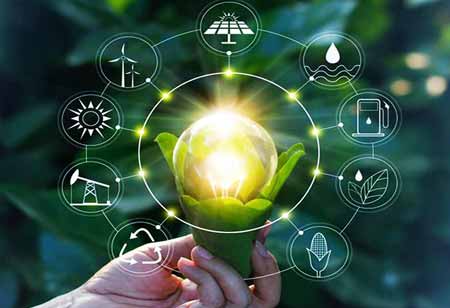Thank you for Subscribing to Energy Business Review Weekly Brief
Renewable Energy to Gain Traction in the Middle East
Oil and gas reserves have sustained the Middle East's prosperity for decades.

By
Energy Business Review | Monday, December 12, 2022
Stay ahead of the industry with exclusive feature stories on the top companies, expert insights and the latest news delivered straight to your inbox. Subscribe today.
The region is gradually shifting to sustainable alternatives with more support for renewable energy.
FREMONT, CA: Oil and gas reserves have sustained the Middle East's prosperity for decades. Low production costs and a lack of government incentives for alternate energy consumption have made fossil fuels the least expensive option for many. This explains the delayed adoption of renewable energy in this region. In recent years, a rise in support for renewables has demonstrated that regional governments are steadily transitioning to sustainable alternatives.
The most recent analysis by GlobalData on Energy Transition in the Middle East indicates that thermal power, which accounted for more than 90 percent of total energy consumption in 2021, dominates the power mix in Middle Eastern countries, with natural gas serving as the primary fuel source. External circumstances, such as Russia's invasion of Ukraine, have thwarted rising efforts to gradually remove dependence on fossil resources. The sanctions put on Russia, the world's second-largest natural gas supplier after North America, have driven the rest of the globe to seek alternative supplies, resulting in an expected increase in Middle Eastern natural gas production in the future decade. In the meantime, oil-fired power capacity is anticipated to decrease by 30 percent by 2030. This gap results from the increasing demand for low-carbon fuels, which favors natural gas over oil and coal.
Carbon capture as mitigation
Carbon capture and storage (CCS) technology is an effective instrument for easing the transition from conventional to renewable energy production. The rising demand has indirectly pushed carbon capture technology for natural gas. The transition to renewable energy needs to occur faster to fulfill demand, necessitating the continued production of fossil fuels. By incorporating carbon capture into oil and gas plants, emissions can be decreased without jeopardizing the region's economic vitality and energy security.
While no legislation has been enacted to require incorporating CCS technology into existing facilities, there is a growing interest in fostering its development. At the Middle East Green Initiative Summit in 2021, Saudi Arabia revealed an investment fund formed exclusively for CCS projects to make their claim. Current projects in Abu Dhabi collect up to 5mtpa of CO2 emissions annually, making them one of the world's largest such operations.
Policies and alliances for green technologies
Despite the absence of renewable energy policies across the United Arab Emirates (UAE), sophisticated emirates such as Abu Dhabi and Dubai have taken significant measures to implement policies in their domains. The regulatory policy for electric vehicle (EV) charging infrastructure published in May 2022 by the Abu Dhabi Department of Energy aims to develop a solid framework for EVS ownership and management. In the past year, the successful rollout of government-mandated Covid-19 vaccines demonstrated that the efficacy of innovative technology and concepts is ultimately dependent on appropriate legislation. The Qatari commitment to electrify its public transportation is a praiseworthy one made possible by the Qatar Free Zones Authority's active efforts to establish e-bus companies.
Natural gas deposits enable Middle Eastern nations to spearhead hydrogen projects and become leading exporters of hydrogen. Future hydrogen-importing countries, such as Germany and Japan, are eager to build well-established collaborations, like the UAE-Germany Hydrogen Partnership, the Saudi Arabia-Germany Hydrogen Agreement, and the UAE-Japan Agreement, to mention a few. Foreign interest and financial backing from local authorities contribute to the spread of hydrogen-based initiatives, including proposals to build an ammonia production facility in Neom. However, efforts are concentrated primarily in the Gulf states.






